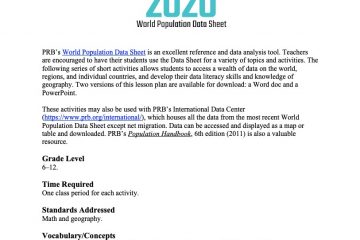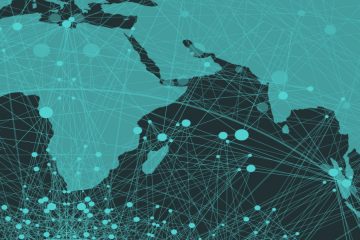
Lesson Plan: Linking Population, Health, and Environment
The number of people on Earth, where they live, and how they live all affect the condition of the environment. People can alter the environment through their use of natural resources and the production of wastes. Changes in the environmental conditions, in turn, can affect human health and well-being. Human demographic dynamics, such as size, growth, distribution, age composition, and migration of population, are among the many factors that can lead to environmental change. Consumption patterns, development choices, wealth and land distribution, government policies, and technology can mediate or exacerbate the effects of demographics on the environment. Students need to understand the linkages between population, health, and the environment. They need to appreciate the wide variations in human well-being around the world. They also need to recognize the consequences for the environment of their choices and actions.
Objectives
- To evaluate the impact of our lifestyles on the environment
- To identify indicators of human impact on the environment
- To explore the variation in quality of life in selected countries
Grade Level: Grades 9-10 [These activities can also be adapted for use with younger or older students.]
Student Activities
Lesson Resources
“Critical Links: Population, Health, and the Environment,” Population Bulletin 58.3 (pp. 3-10;17-30) (The page numbers provided refer to the pages of the publication, not the pdf file.)
Central Concepts: Population growth, human-environment interaction, human health
Content Standards
National Geography Standards
- Standard 14 (Environment and Society): How human actions modify the physical environment.
- Students should understand how population growth and human activities change Earth’s environment.
- Students should understand that changes in Earth’s environment may affect human health and quality of life.
Minnesota Geography Standards
- Interconnections: Students will describe how humans influence the environment and in turn are influenced by it. See http://www.macalester.edu/geography/mage/
Special thanks to Frank Zinn and Roger-Mark De Souza for reviewing this lesson plan.
By Martha Sharma






